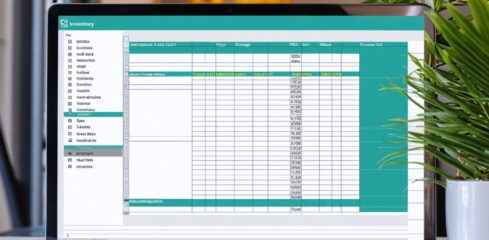

Your cost of goods sold is an important accounting metric that can indicate your company’s financial health. You’re also required to report your COGS to the IRS, making calculating your COGS an essential part of doing business. Let’s go over the formula for COGS and talk about why this figure is so important.
What Is Cost of Goods Sold (COGS)?
Cost of goods sold, also called cost of sales, is a figure that includes all the direct costs associated with acquiring and managing inventory. COGS can incorporate the cost of raw materials, shipping and the labor involved in producing and storing the products. However, it does not include indirect costs like distribution or marketing.
COGS is a critical value used in accounting, as it is subtracted from revenue to calculate gross profit and gross margins. In this way, cost of goods sold can be a significant indicator of financial health because businesses must curb their COGS as much as possible to maintain solid profit margins. The accounting practices used to calculate COGS can value it in a few different ways.
The costs that can contribute to COGS include:
- Salaries and wages of staff involved in purchasing, storing and managing inventory.
- Taxes and other fees incurred when making inventory purchases.
- Storage rental fees or warehouse ownership costs.
- Cost of raw materials to produce merchandise.
- Cost to purchase merchandise.
- Production costs.
- Shipping costs.
COGS Formula
You’ll need to know how to use the COGS formula for accounting purposes and to understand your company’s financial position. Before calculating your cost of goods sold, you’ll need to identify information such as:
- Beginning inventory: This is the value of your stock at the start of the fiscal period.
- Cost of purchases: This includes the value of any inventory parts or raw materials purchased during the fiscal period.
- Cost of labor: This figure should include the wages of any employee directly involved in producing products or managing stored inventory. Do not include the salaries of sales personnel, marketers, finance team members or administrators.
- Ending inventory: This is the value of your stock at the end of the fiscal period.
- Valuation method: The accounting method you use determines how you value your beginning and ending inventory. When businesses keep a stock of similar items purchased at different price points, they use the average costing method to determine the cost of goods sold based on the current average cost of inventory. Finale Inventory can make your accounting and book-keeping simpler by helping your business calculate the average cost of goods.
Once you’ve identified values for each of these items, you can plug them into the cost of goods sold formula. The COGS formula is beginning inventory plus the cost of purchases and direct labor during the fiscal period minus ending inventory.
Businesses typically calculate their COGS for the fiscal year for their annual accounting purposes. To apply the COGS formula in this way, you would start with the value of your beginning inventory in January or whenever you begin your company’s fiscal year. Then, you’d add in all inventory-related purchases and inventory-related labor costs during the year. With these figures totaled, you can then subtract the value of your inventory at the end of December or whenever you end your fiscal year to arrive at your COGS for the previous fiscal year.
You can also plug this figure into the COGS percentage formula to determine your COGS rate, or your cost of goods sold expressed as a percentage of your total sales. In this calculation, you’ll take your COGS and divide it by your sales.
Finale Inventory also makes arriving at accounting figures such as COGS simpler with the general ledger transactions, and reports feature within our inventory accounting module. You can also integrate Finale Inventory with QuickBooks Desktop or QuickBooks Online for even more inventory accounting using your finance team’s existing software solution.
Cost of Goods Sold Example
Let’s walk through an example using the cost of goods sold formula. Let’s say your inventory at the start of the year is valued at $20,000. You purchase $10,000 worth of new stock and supplies throughout the year and pay $30,000 in inventory-related labor costs. At the end of the year, your inventory is valued at $15,000.
Plugging these values into the COGS formula, you would first add $20,000 to $10,000 plus $30,000 to get $60,000. Then, you would subtract $15,000 to arrive at $45,000. Or, $20,000 + ($10,000 + $30,000) – $15,000 = $60,000.
If you wanted to learn your COGS rate, you would need to also look at your total revenue for the year. Let’s say it was $90,000. To find your COGS rate, you would take $45,000 divided by $90,000 to get a COGS rate of 0.5 or 50%.
Why Is COGS Important?
COGS is one of the many figures you’ll need to know when it comes to inventory accounting. With all the different numbers and calculations involved in inventory accounting, what makes cost of goods sold so important? Besides COGS being a central variable in many other inventory accounting formulas, knowing and understanding your COGS is critical for reasons such as:
1. Tax Reporting
If your business makes and sells goods or buys and resells merchandise, the IRS requires you to include your COGS on your financial statements and tax returns. Your COGS is considered a business expense, not an asset, so it can be written off from your company’s total taxable income. In other words, your cost of goods sold decreases the total amount of taxes you’ll owe.
To deduct your COGS from your income, you’ll need to have detailed documentation of all your business costs. This documentation entails keeping receipts and accurately recording your expenses in your inventory management and accounting software. Tax benefits are the only good reason to have a high COGS. Therefore, it’s crucial to include all the actual expenses involved in your inventory costs without trying to add to your COGS unnecessarily.
2. Managing Profits
Understanding your COGS is essential from a business owner’s perspective because your COGS directly influence profits. Your COGS subtracted from your sales revenue is equivalent to your gross profits, and a high COGS means lower profits and a smaller profit margin.
You’ll want to monitor your COGS and be aware when the value gets higher so you can look for ways to cut costs and achieve higher profits. Understanding your COGS and the direct costs involved in your inventory acquisitions can help you make better financial decisions. Demonstrating your earnings in relation to your expenses can also help you obtain business loans.
3. Pricing Goods for Sale
Finally, you must have a firm handle on your COGS to determine how to price your products for resale. You must price your products in such a way to cover the cost of goods sold, or you risk falling into financial hardships. However, pricing products too high can cause you to lose customers and sales. To avoid pricing their products too high or too low, businesses often use their COGS in conjunction with a set markup.
For example, a markup of 25% would ensure that all goods are priced to achieve a healthy profit. If a product costs $20 to purchase and you add a 25% markup, you would resell it for $25 and ensure a profit. You can set up a similar pricing formula in Finale Inventory to price your goods based on their average costs.
Finale Inventory Can Simplify Your Inventory Responsibilities
Finale Inventory is a comprehensive inventory management solution that can track your inventory expenses and sales in one centralized platform. Complete with our inventory accounting and reporting suite and our sophisticated landed costs feature, Finale Inventory has everything you need to streamline your inventory accounting process and make finding your COGS feel effortless. Plus, with real-time inventory tracking, automated reorder points and a range of other features, our software can simplify your inventory responsibilities across your business.
Book a demo today!






